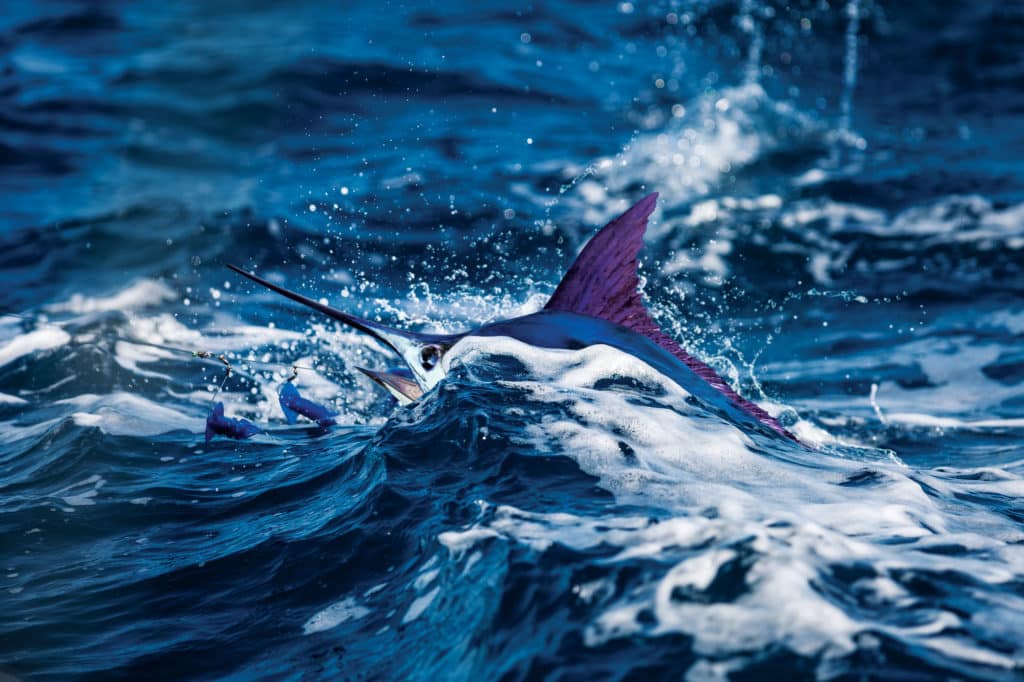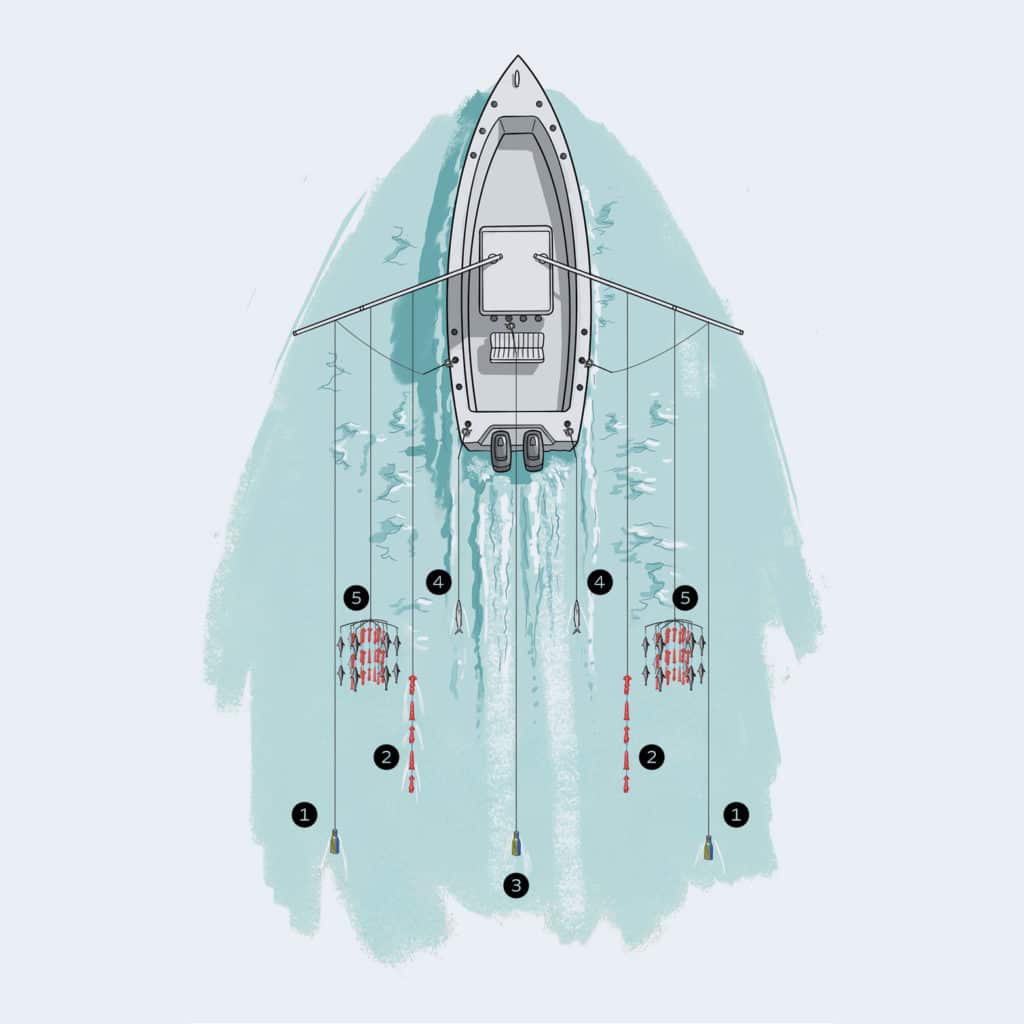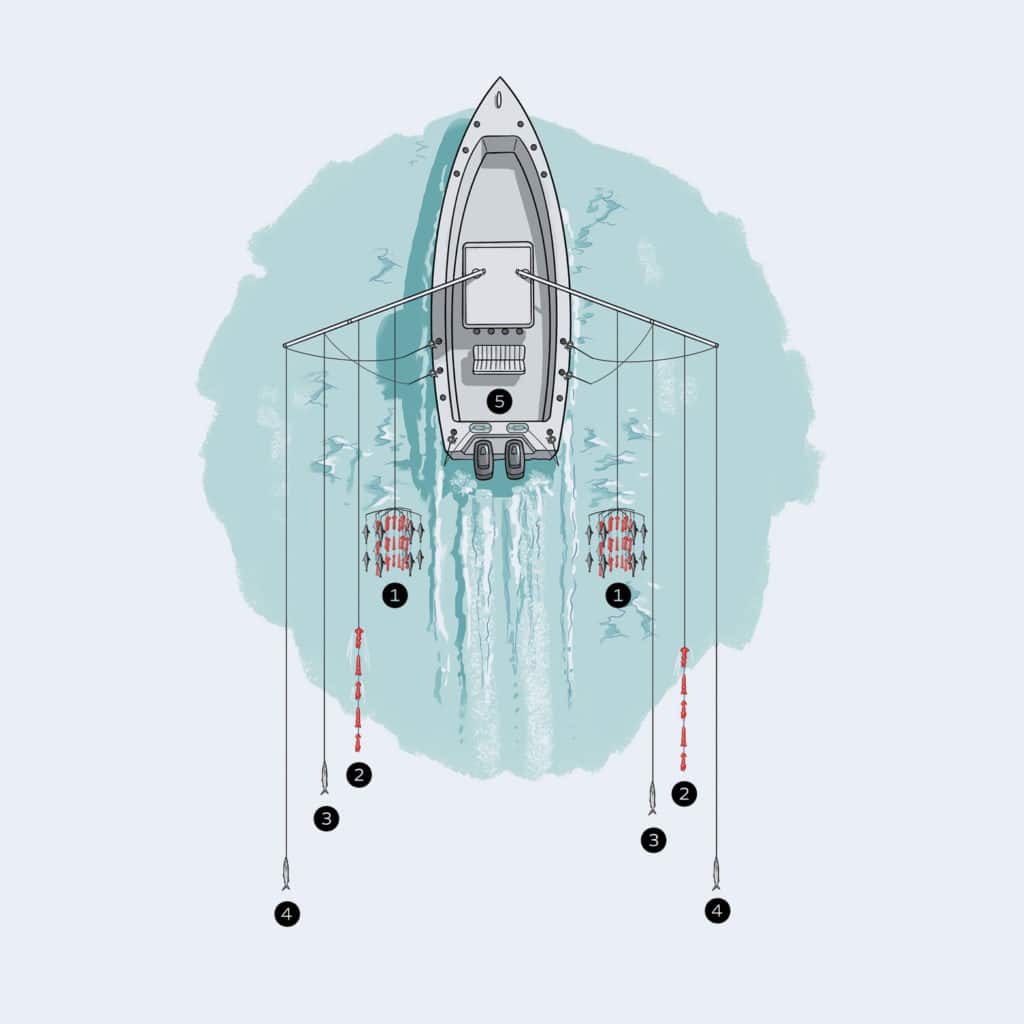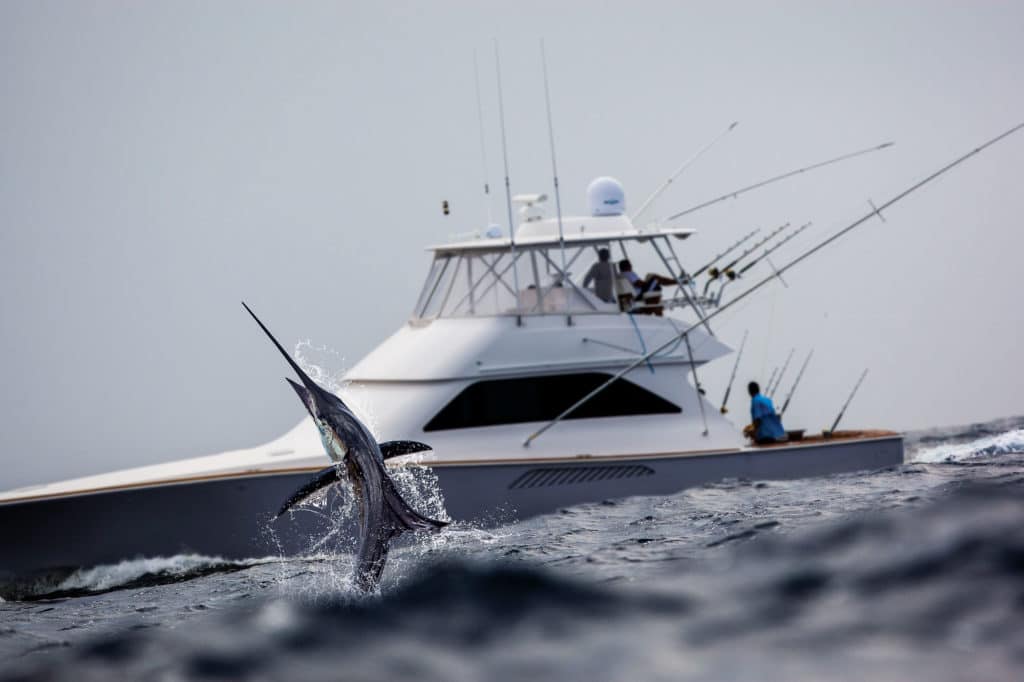
The best billfishers know that every season brings new challenges, demanding flexibility and fine-tuning of strategies and techniques.
In the summer of 2017, mid-Atlantic anglers fishing live bait hit big on white marlin. The following year, it seemed the whites got selective, turning their bills up at anything that wasn’t a dead tinker mackerel. Then, last summer, white marlin were scattered, and catches were few and far between. But at the same time, anglers saw a surge in both blue marlin and sailfish catches.
It’s anyone’s guess what the next season will bring, but anglers willing to experiment stand the best chance of breaking the code on any given year.
Bump It Up
“Last year, white marlin fishing was tough,” says Capt. Jeremy Blunt of Ocean City, Maryland. “So, this year will probably be better,” he says, only half joking. Turning serious, Blunt notes that the local marlin fishing seems to follow an on-and-off pattern. “When one year is slow, the next is usually good,” he says.
As for the difficult seasons, Blunt points to a lack of bait. “Last year, we didn’t have the schools of mackerel and squid like we saw in 2018,” he says. That abundance of bait is the most important factor in finding catchable numbers of marlin, even more important than water conditions. Blue-green to blue water is the most promising, Blunt says, but “if I find bait in greener water, I know I have a chance of finding the fish.”

Blunt most often found the conditions he was looking for in Washington and Poor Man’s canyons. “The fish were spread out, from 50 fathoms out to 500,” he says. With both the bait and billfish scarce, Blunt adjusted his tactics to cover more water and boost his odds of running into marlin.
“Last year, we did more 10-knot trolling,” he says. Instead of pulling the traditional spread of ballyhoo at 5½ knots, he bumped up his speed to 10 knots for greater water coverage. Besides covering more water, Blunt says high-speed trolling fires up the fish he is able to find.
To accommodate faster trolling speeds, Blunt adjusted his spread. “We put out three plugs and two dink baits,” he says. He runs artificial lures on the short riggers and center line, with dink (small) ballyhoo, rigged on a circle hook on 30-pound outfits on the flat lines, off the transom. Running the artificial lures attracted both blue and white marlin, and it saved natural bait, which washes out quickly at higher speed.
Blunt rigs his lures with a single hook on 530-pound Momoi X-Hard leader. “I hook more fish with one hook than two,” he explains.
The large lure is perfect for blue marlin, but should a white come up on one, Blunt drops back one of the ballyhoo rigs and tries to tease it off the lure.
Blunt finds that when fast-trolling brings up the fish, they usually mean business. Large lures moving at high speed excites them. “When a marlin comes into the spread, it isn’t window-shopping,” he says. “The fish attack aggressively, and everyone has to stay on their toes and be ready.”
Going Live
There is no argument live bait produces the greatest numbers of marlin. Capt. Randy Butler, who charters out of Virginia Beach, Virginia, says his best season was 437 white marlin. There is no secret to his success; he slow-trolls live tinker mackerel and drives white marlin mad.
But just because live bait catches the most marlin, it doesn’t mean fishing is always easy. Butler’s fortunes rise and fall on the availability of the small, bullet-shaped mackerel. “Last year I didn’t see as much bait,” Butler admits, but adapting his techniques to the challenge, he still enjoyed a banner year on blue marlin, finding them in the same 50- to 500-fathom range.

Butler says 2019 was unprecedented for blue marlin in his local waters, from the Washington Canyon to south of the North Carolina border.
“We caught 38 blues, the most ever out of Virginia Beach,” he says. In just four trips, he tallied 12 blue marlin catches.
To start his day, Butler searches for schools of tinker mackerel on the bottom, then drops a Sabiki rig with five long-shank hooks dressed in red rubber tubing into the school.
Butler keeps his live baits in two 50-gallon baitwells plumbed into his deck, but weekend anglers can keep dozens of tinker mackerel alive in a 55-gallon drum with a high-speed pump and large overflow.
Once he has a few dozen baits, he rigs them by bridling through the nose with floss twisted onto an 8/0 Owner inline circle hook. He sets them out and trolls slowly, moving along at 3 to 4 knots.
To draw marlin to the spread, Butler uses a three-tiered dredge and squid-chain teasers.
Since he’s trolling slowly, his teasers are rigged with 10 large squid punctuated with a naked tinker mackerel. The dredge carries two tiers of Sebile lures and a tier of rigged mullet.
Hooking a marlin with a circle hook is never easy, and slow-trolling live bait makes it even harder. Marlin that come into the spread are usually less aggressive and moving slower than when they attack artificials towed at faster speeds. In addition, the large live bait offers more opportunity to miss the setup and pull the hook.
To seal the deal, Butler gives the fish a longer drop-back, taking the reel out of gear and giving the fish plenty of time to eat. When he’s sure the fish has taken the bait solidly, he tightens the drag and cranks in the slack. With the line tight, Butler puts his thumb on the spool and gives the rod three strong jerks to set the hook. “Jamming the hook before the fish jumps increases the hookup ratio,” he says.
While white marlin numbers were down for 2019, both Butler and Blunt are optimistic about 2020.
“If we follow the on-and-off pattern, this year will be on,” Blunt says. Then he adds, “I’m looking forward to pretty water and tons of bait.”
Whatever this marlin season throws at these captains, they’ll work smart to stay one step ahead of the fish.

What
Blue and white marlin, and sailfish
When
June through October
Where
Canyons and cliffs along the continental shelf
Who
Expect long runs to the grounds, and long days trolling in blue Gulf Stream waters. These experienced pros can put you on fish and shorten the learning curve to spot, hook and fight mid-Atlantic billfish.
Virginia Beach, Virginia: Capt. Randy Butler, 757-761-6402, rebelsportfishing.com
Ocean City, Maryland: Capt. Jeremy Blunt, 410-507-4150, wreckersportfishing.com
Rods
7-foot medium-heavy Penn Carnage II or equivalent
Line
40-pound braid backing with 25-pound monofilament top shot for live-baiting; 500 yards of 80-pound braid backing and 500 yards of 100-pound mono for high-speed trolling
Reels
For live-baiting, Penn International 12VI or equivalent; for lures, Penn International 80 or equivalent
Lures/Hooks
Black Bart Breakfast and Brazilliano, Pakula Original Sprocket; Mustad 7691s-SS Big Game stainless-steel hook; Owner 8/0 SSW inline circle hook for live bait
Leader
20 feet of 50-pound to a snap swivel, then 5 feet of 80-pound mono to the hook for white marlin and sails; 21 feet of 400-pound mono to 6 feet of 530-pound hard









